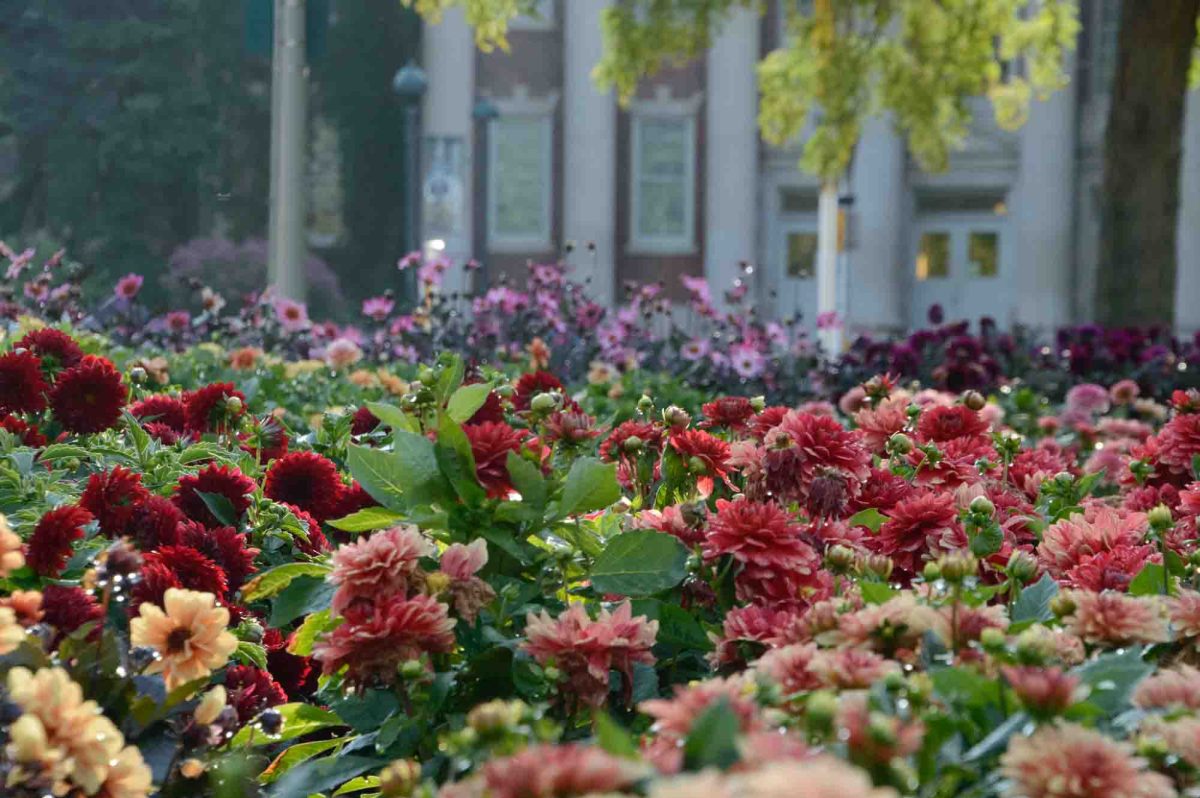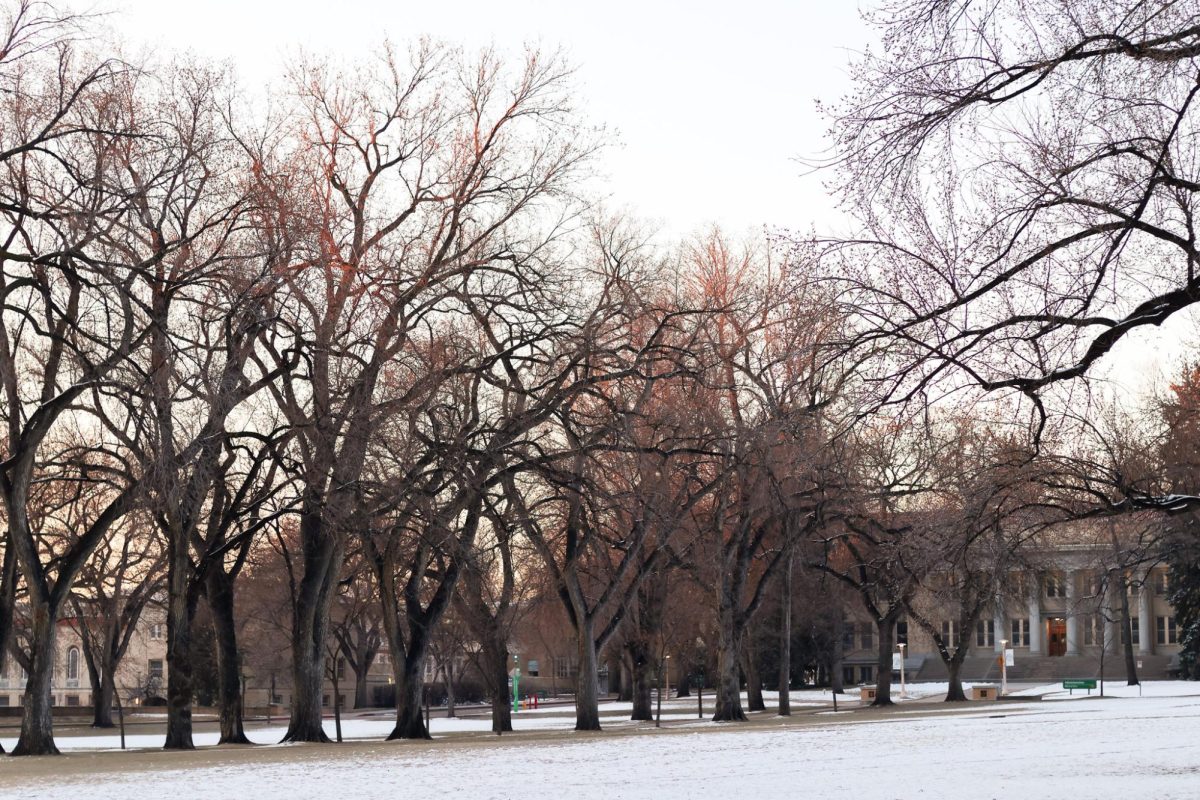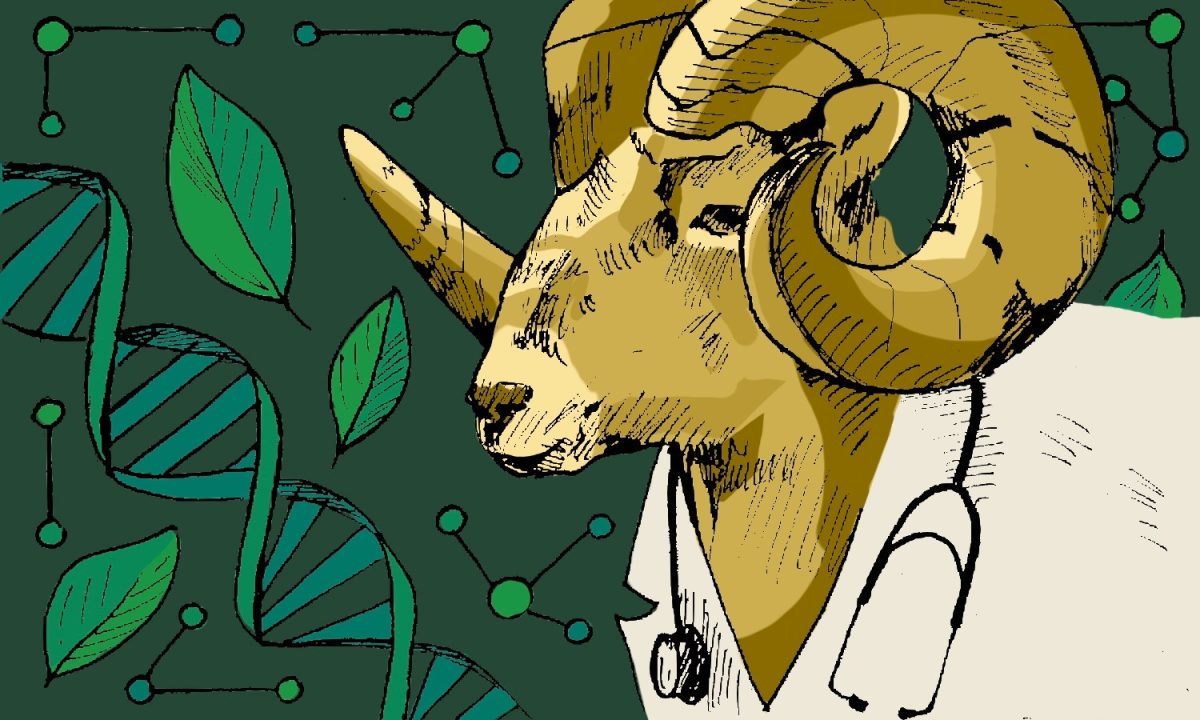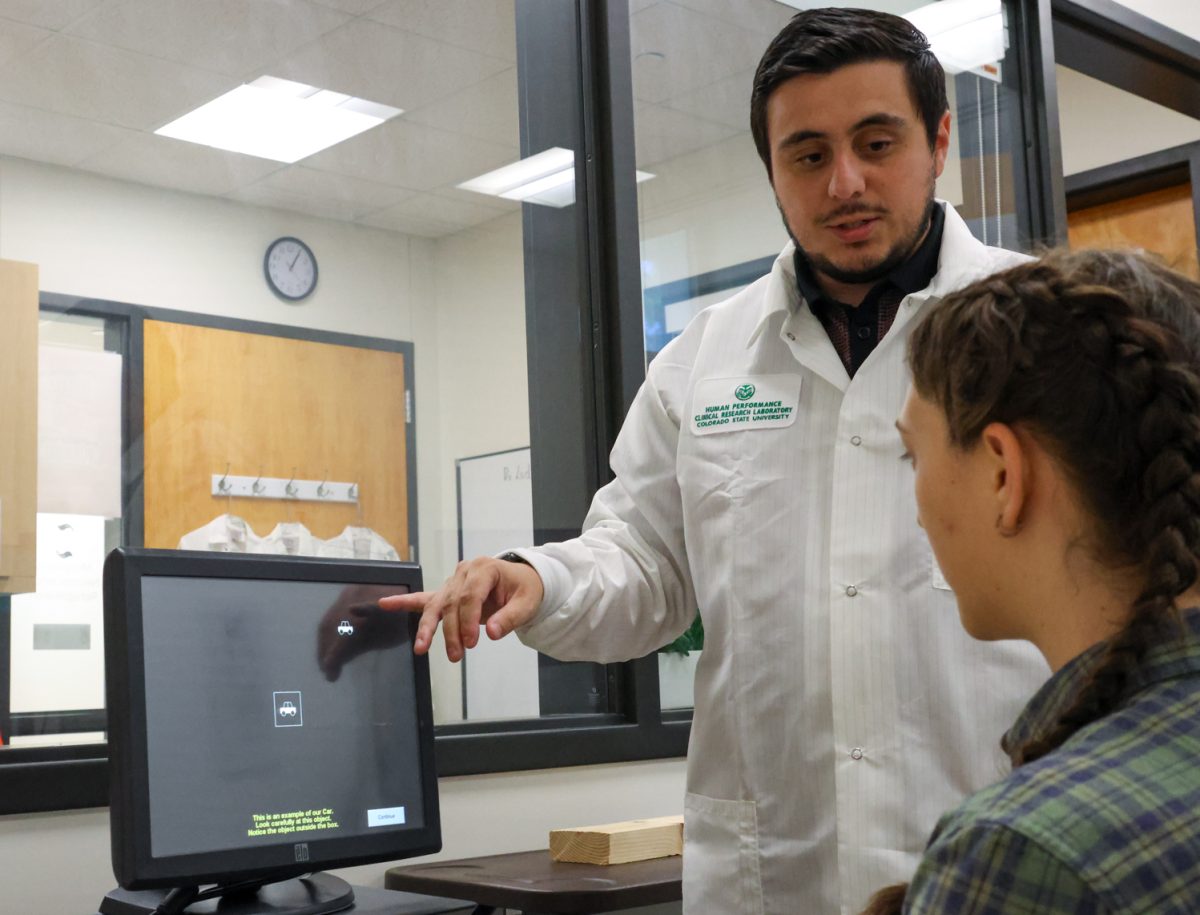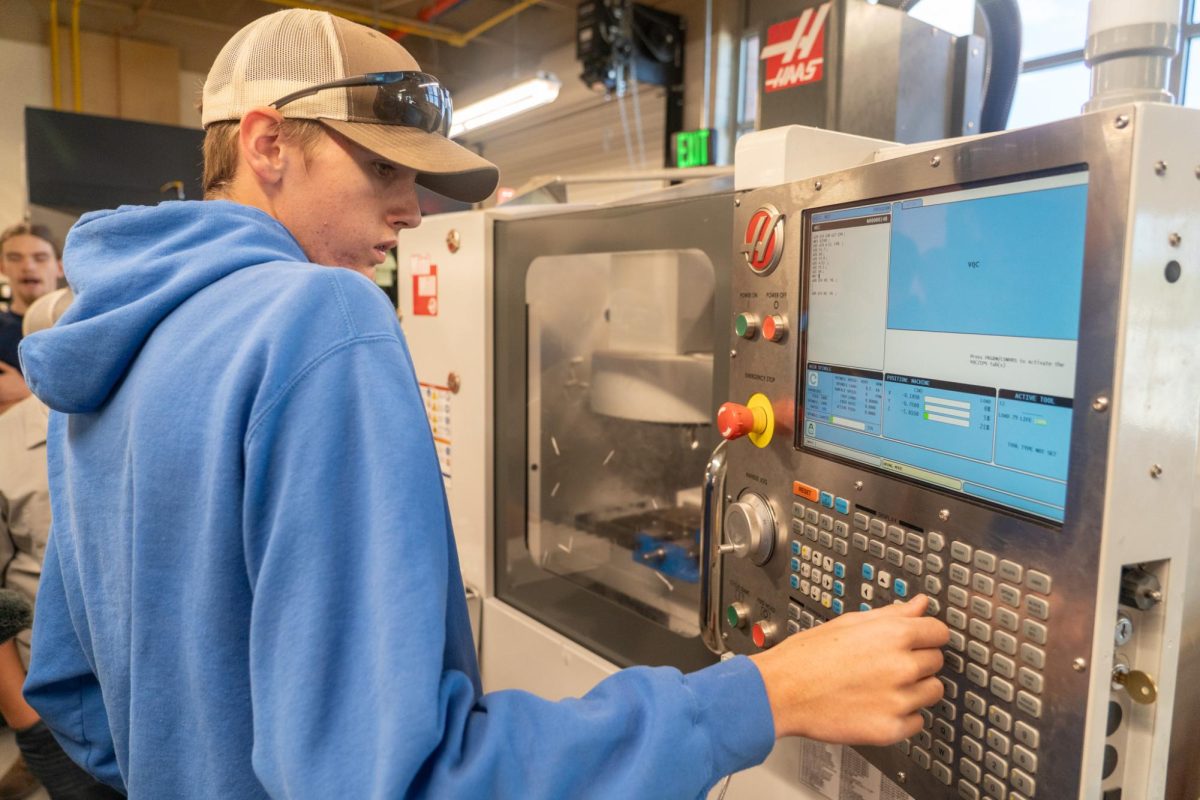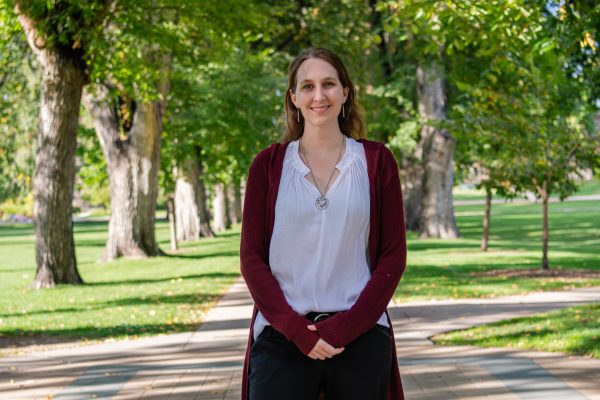Why wait for rain to see a rainbow when the Annual Flower Trial Garden blooms right by the University Center for the Arts at Colorado State University?
This bright outdoor space serves as more than just a visual treat; it is a living laboratory, running from May to October, where researchers, students and garden enthusiasts gather to study, discover and analyze a variety of plants that are appropriate for the Rocky Mountain and High Plains region.
Chad Miller, director of the Flower Trial Gardens, emphasized that choosing plants for the trial garden is a collaborative effort between academic institutions and partner companies.
“We’re at the mercy of Mother Nature. If we perceive a major problem, we will go ahead and try to treat that, but part of the trial is also to see what plants are really strong and healthy.” -Chad Miller, Annual Flower Trial Garden director
“We don’t necessarily choose the plants,” Miller said. “The plants are chosen for us by cooperating companies.”
Research Associate David Staats elaborated on the dynamic aspect of engagement in the garden, echoing Miller’s sentiment.
“It’s interesting that it’s kind of whoever wants to pay the entry fee, so it’s largely self-supported through entry fees,” Staats said.
On CSU’s end, the criteria for plant selection is straightforward. CSU allows any company that pays the entry fee to enter their plants.
“There’s really no criteria other than they pay us to trial them,” Miller said. “So long as they can provide the plants and pay the entry fee, we trial them.”
However, for the partner companies, certain qualities in plants are taken into account.
“(The companies) decide, typically — newer varieties, newer cultivars, numerous selections, usually within the last couple of years,” Miller said.
The main objective is to find plants that grow well in the area and help the local community as well as the larger horticultural sector.
“They’re trying to pick out the best plants that do well for this area and promote the better ones,” Staats said.
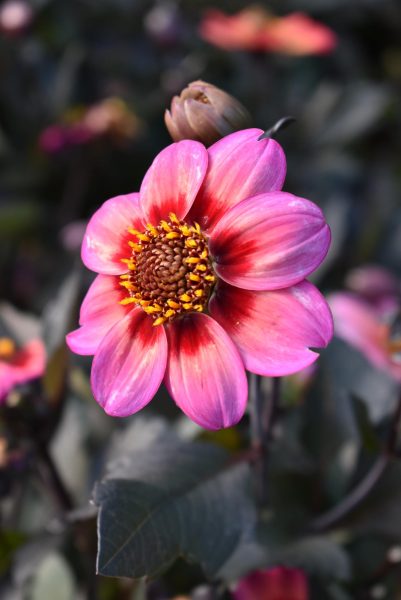
The standout of the 2023 annual garden was the Dahlia Dahlegria Apricot Tricolor from Syngenta. This plant, crowned Best of Show, captivated visitors with its vibrant blend of colors set against striking dark foliage. It is appealing to bees and resistant to mildew, which made this dahlia variety have a lasting impression in the trial garden.
Miller acknowledged the challenges posed by unpredictable factors like weather and pests. In the face of these problems, the garden’s team employs strategic measures to ensure its upkeep.
“We’re at the mercy of Mother Nature,” Miller said. “If we perceive a major problem, we will go ahead and try to treat that, but part of the trial is also to see what plants are really strong and healthy.”
Staats emphasized the importance of maintaining a careful balance between intervening to address issues and allowing plants to undergo natural trials, ensuring the garden’s research remains authentic and comprehensive.
“We try to find that balance in between not babying them so much,” Staats said. “We need to give them an actual trial in the climate that we’re in and all the different pressures that a plant could perceive in the landscape.”
Nicole Darling, administrative assistant at the University Center for the Arts, walks by the flowers every time she goes to work.
“I think they’re beautiful,” Darling said. “I love the different levels: You have the pots, you have the in-the-ground flowers, you have the ones under the shaded area — you just have like a blanket of color everywhere.”
Sam Altaffer, who works adjacent to the garden, said they share this feeling, highlighting their favorite part of working in the department.
“At least for me, it is just working outdoors,” Altaffer said. “I’ve always really liked the outdoors, and so being able to make that the main premise of my job, even if it’s raining, snowing, whatever — I’m always really thankful for that.”
The garden’s commitment to providing hands-on learning opportunities for students while also fostering a sense of community ownership and involvement in its upkeep and activities is highlighted by the role of student workers and volunteers in maintaining community engagement.
“We definitely employ students,” Miller said. “Some of them will come back, some will go find other jobs, but we definitely involve students.”
Reach Hania Nini at science@collegian.com or on Twitter @HaniaNini123.



